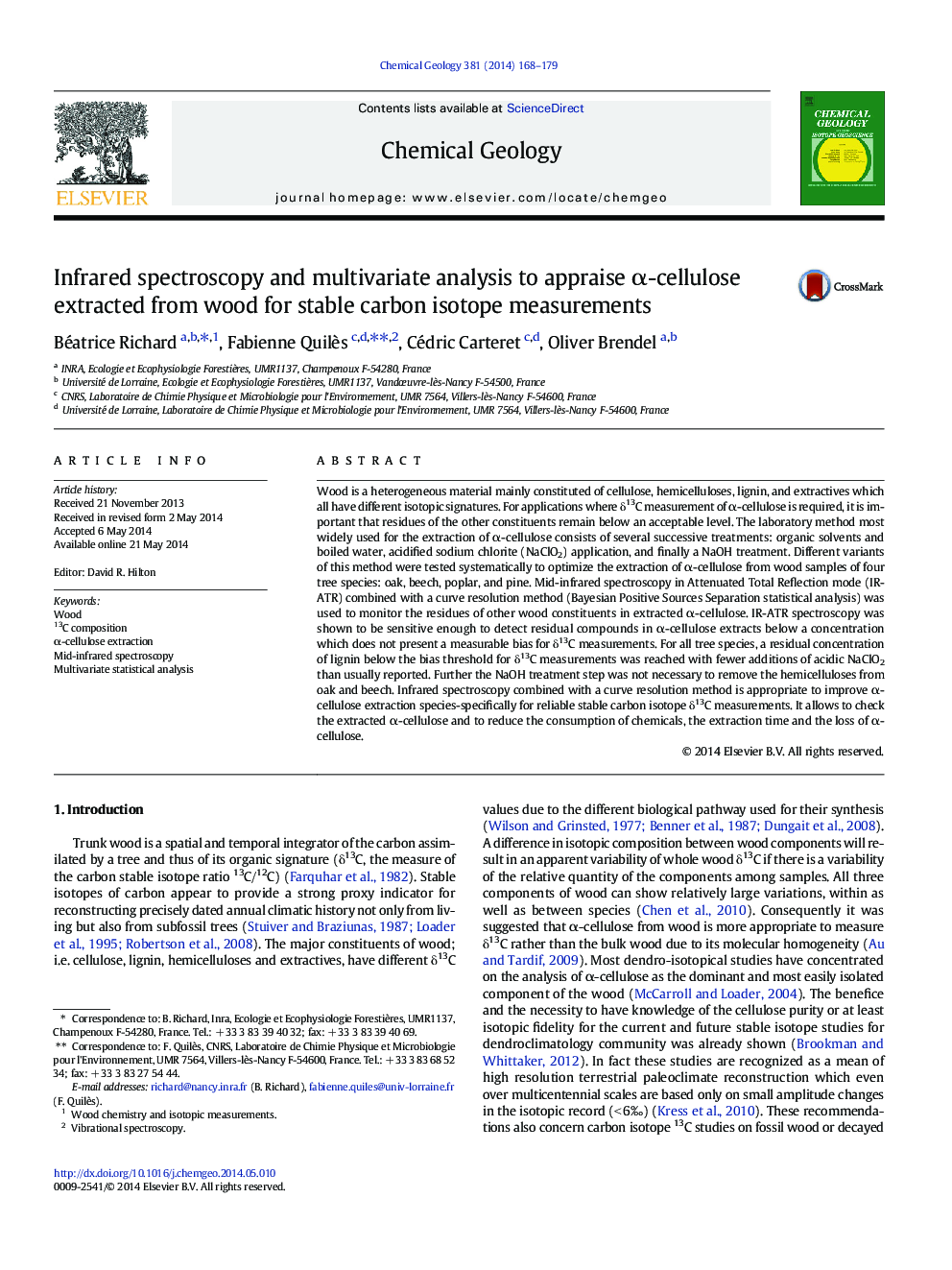| Article ID | Journal | Published Year | Pages | File Type |
|---|---|---|---|---|
| 6436614 | Chemical Geology | 2014 | 12 Pages |
â¢Chemical extractions of α-cellulose from woods were investigated for δ13C analysis.â¢IR-ATR and a curve resolution method (BPSS) were used to check the extraction.â¢IR-ATR detected residuals in a threshold which did not impact δ13C measurements.â¢Chemical treatment for α-cellulose extraction should be adapted to the tree species.
Wood is a heterogeneous material mainly constituted of cellulose, hemicelluloses, lignin, and extractives which all have different isotopic signatures. For applications where δ13C measurement of α-cellulose is required, it is important that residues of the other constituents remain below an acceptable level. The laboratory method most widely used for the extraction of α-cellulose consists of several successive treatments: organic solvents and boiled water, acidified sodium chlorite (NaClO2) application, and finally a NaOH treatment. Different variants of this method were tested systematically to optimize the extraction of α-cellulose from wood samples of four tree species: oak, beech, poplar, and pine. Mid-infrared spectroscopy in Attenuated Total Reflection mode (IR-ATR) combined with a curve resolution method (Bayesian Positive Sources Separation statistical analysis) was used to monitor the residues of other wood constituents in extracted α-cellulose. IR-ATR spectroscopy was shown to be sensitive enough to detect residual compounds in α-cellulose extracts below a concentration which does not present a measurable bias for δ13C measurements. For all tree species, a residual concentration of lignin below the bias threshold for δ13C measurements was reached with fewer additions of acidic NaClO2 than usually reported. Further the NaOH treatment step was not necessary to remove the hemicelluloses from oak and beech. Infrared spectroscopy combined with a curve resolution method is appropriate to improve α-cellulose extraction species-specifically for reliable stable carbon isotope δ13C measurements. It allows to check the extracted α-cellulose and to reduce the consumption of chemicals, the extraction time and the loss of α-cellulose.
Graphical abstractDownload full-size image
